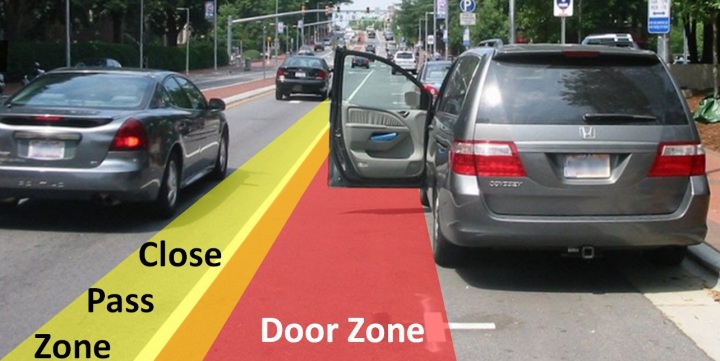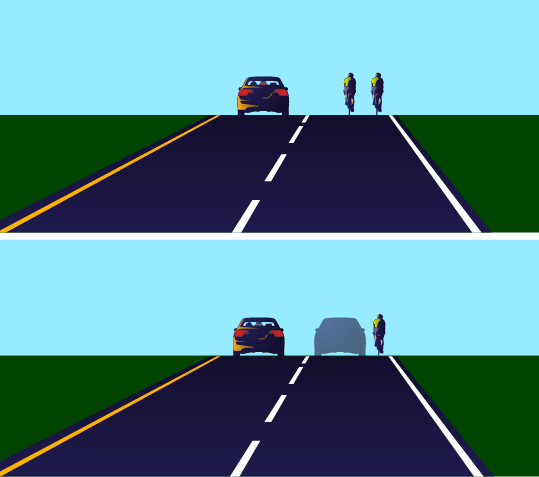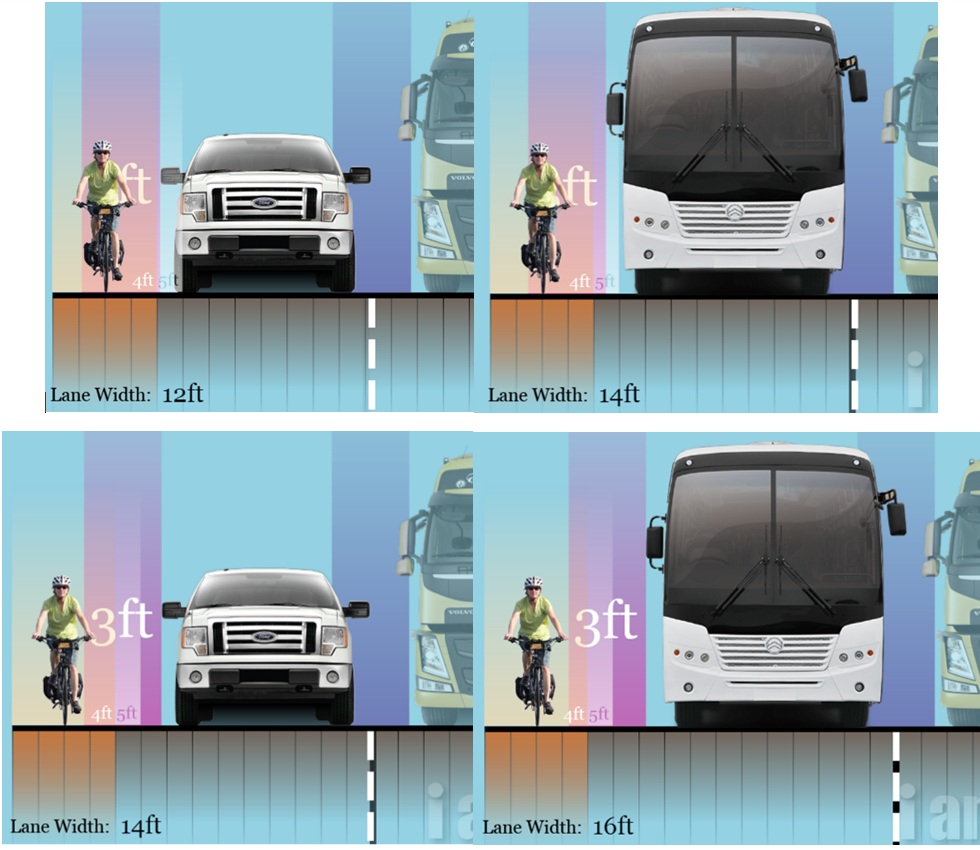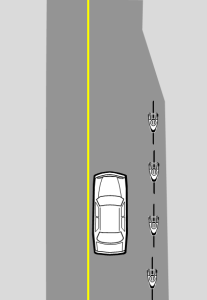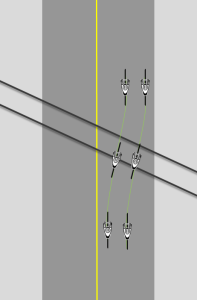Road Characteristics
Common road characteristics can pose special risks to bicyclists riding alone or in groups. Below are some ways to avoid those dangers.
Narrow Lanes
- Most marked travel lanes are too narrow for safe same-lane passing by a motor vehicle.
- Motorists will often misjudge the width required to pass safely when they see cyclists riding at the right edge of a narrow lane. This is the most common cause of daylight motorist-overtaking-bicyclist crashes in North Carolina.
- Controlling a narrow lane by riding two abreast or in its center reduces the risk of overtaking-type crashes by deterring same-lane passing.
- Drivers can usually pass in the next lane.
- If other traffic backs up without passing for more than a few minutes, a well-coordinated group can pull off of the roadway at a safe location such as a wide paved shoulder, rest area or public driveway. Unpaved shoulders, sidewalks and private driveways are unsuitable/unsafe locations for group stops.
[Image: Keri Caffrey]
Wide Lanes
- At least 14’ of pavement is required for safe same-lane passing by a car; at least 16’ for passing by a truck or bus.
- A group may facilitate safe passing in wide lanes by riding single file at the right side of the wide lane.
- Care must be taken to encourage same-lane passing only with adequate length of wide lane, away from intersections.
[Images: i am traffic]
Variations in Usable Width
- If conditions at the right edge of the lane vary, operate straight the left portion of the lane as if it is a continuous narrow lane.
- Don’t hug the right edge of a lane as it varies in width; this produces conflicts when the lane narrows.
Door Zones
- Always stay at least 5 feet from parked cars to avoid being startled or struck when a door opens directly in front of you.
- Subtract the 5’ door zone from the lane width when determining the usable lane width. This often means treating the remaining lane width as a narrow lane.
Paved Shoulders and Bike Lanes
- Wide paved shoulders and bike lanes vary in quality and surface condition. If wide and clean, they can facilitate passing of the group by motor traffic.
- Avoid riding on edge pavement that features debris or other hazards that may force the group to make sudden merges into the adjacent lane.
- Avoid using right-edge bike lanes and shoulders to pass on the right; this can result in right-hook collisions. It is safer for the group to get in line with the traffic queue.
Other Hazards
- Debris – Stay away from the right edge of the road if it isn’t clean.
- Seams – Beware of the potential for diversion-type falls; stay away from gutter edges, pavement seams and other cracks and height discontinuities that run parallel to your direction of travel.
- Railroad Tracks – Cross tracks at close to a 90 degree angle. Give other cyclists maneuvering space; communicate and prepare to change lane position and direction of travel as needed.
